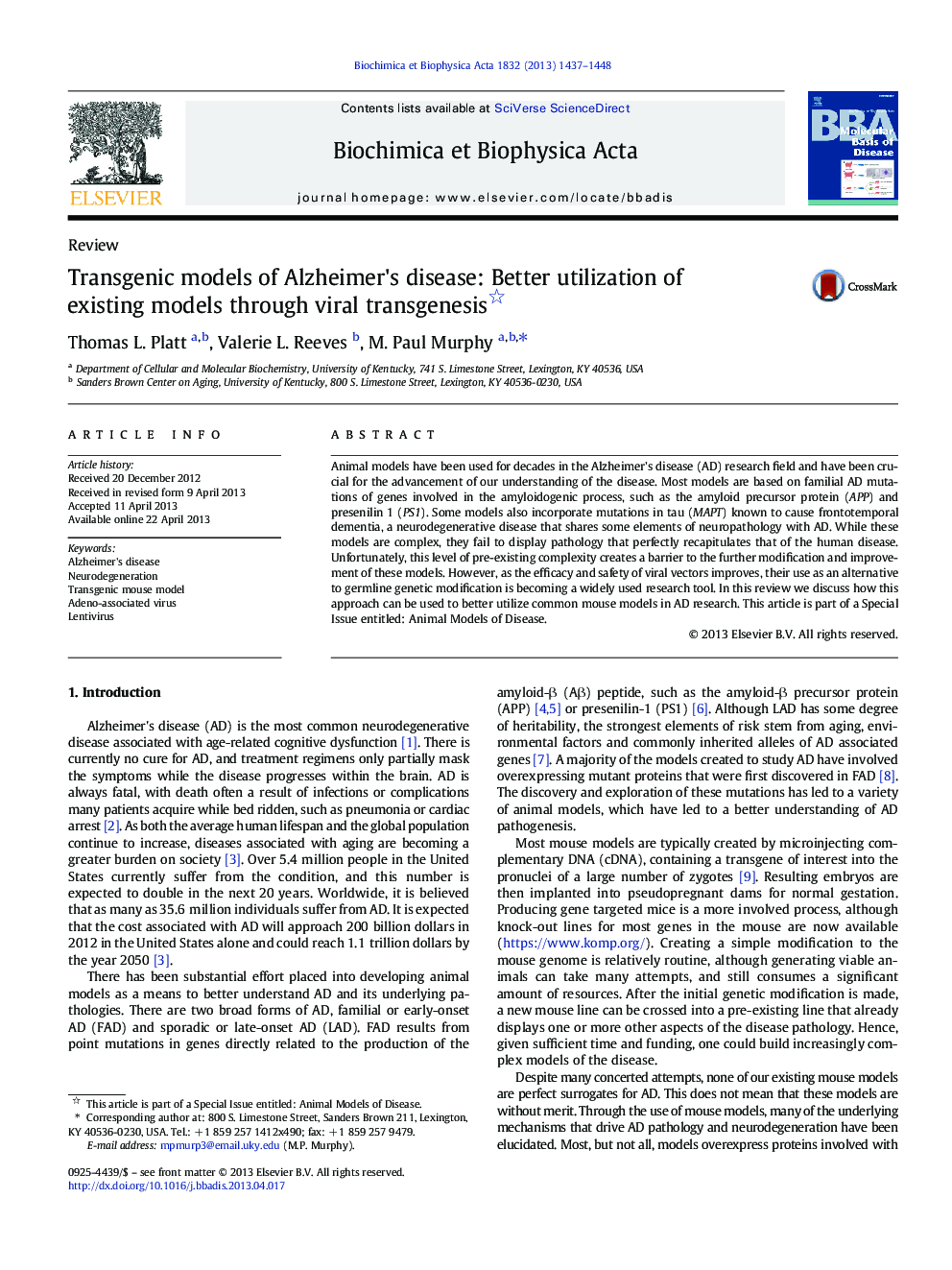| کد مقاله | کد نشریه | سال انتشار | مقاله انگلیسی | نسخه تمام متن |
|---|---|---|---|---|
| 1904836 | 1534668 | 2013 | 12 صفحه PDF | دانلود رایگان |

• We provide brief summaries for some of the more popular transgenic murine models of AD.
• We discuss some of the drawbacks that come with generating new transgenic models.
• We discuss how we can use somatic viral transgenesis to better utilize existing models of AD.
Animal models have been used for decades in the Alzheimer's disease (AD) research field and have been crucial for the advancement of our understanding of the disease. Most models are based on familial AD mutations of genes involved in the amyloidogenic process, such as the amyloid precursor protein (APP) and presenilin 1 (PS1). Some models also incorporate mutations in tau (MAPT) known to cause frontotemporal dementia, a neurodegenerative disease that shares some elements of neuropathology with AD. While these models are complex, they fail to display pathology that perfectly recapitulates that of the human disease. Unfortunately, this level of pre-existing complexity creates a barrier to the further modification and improvement of these models. However, as the efficacy and safety of viral vectors improves, their use as an alternative to germline genetic modification is becoming a widely used research tool. In this review we discuss how this approach can be used to better utilize common mouse models in AD research. This article is part of a Special Issue entitled: Animal Models of Disease.
Journal: Biochimica et Biophysica Acta (BBA) - Molecular Basis of Disease - Volume 1832, Issue 9, September 2013, Pages 1437–1448